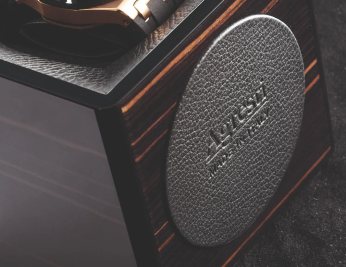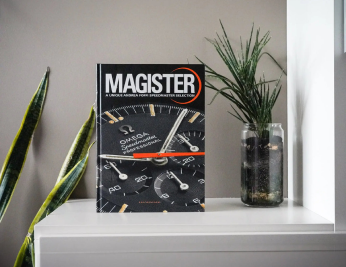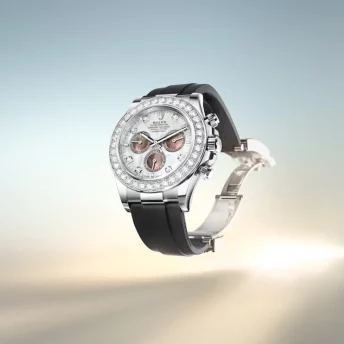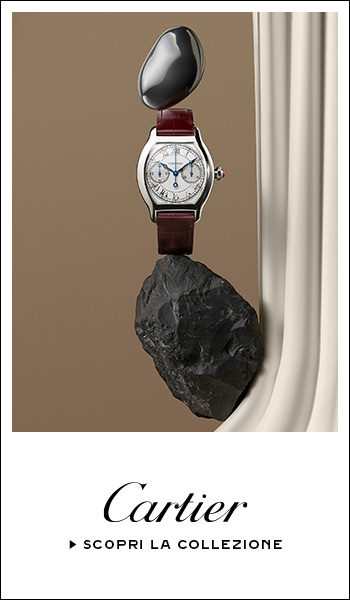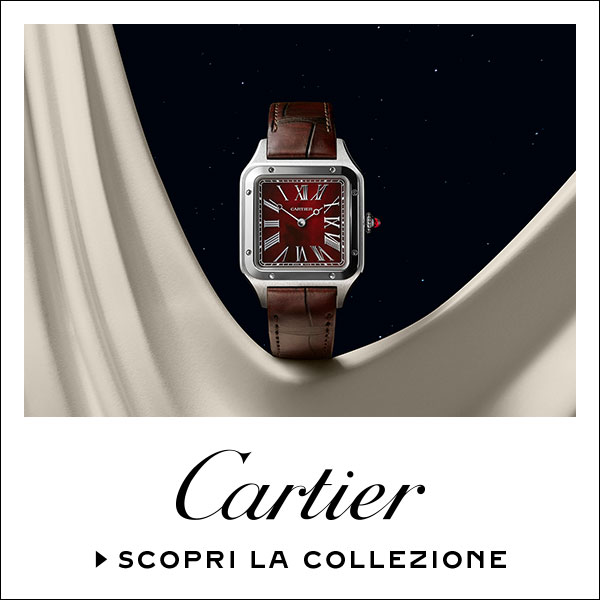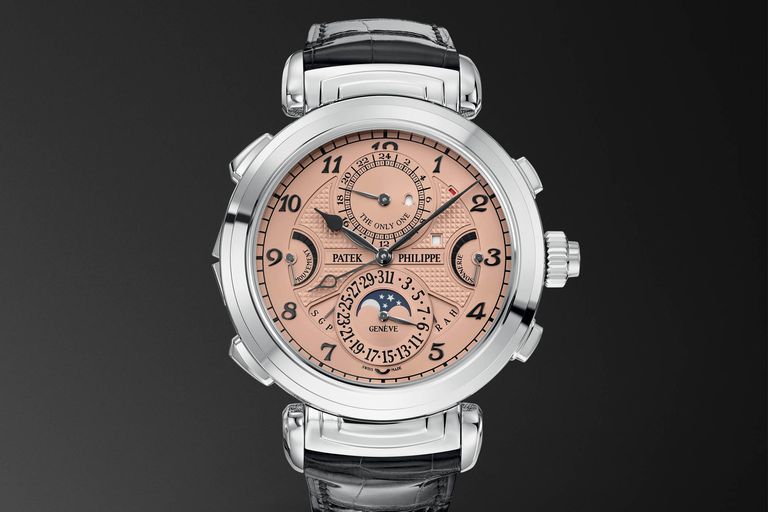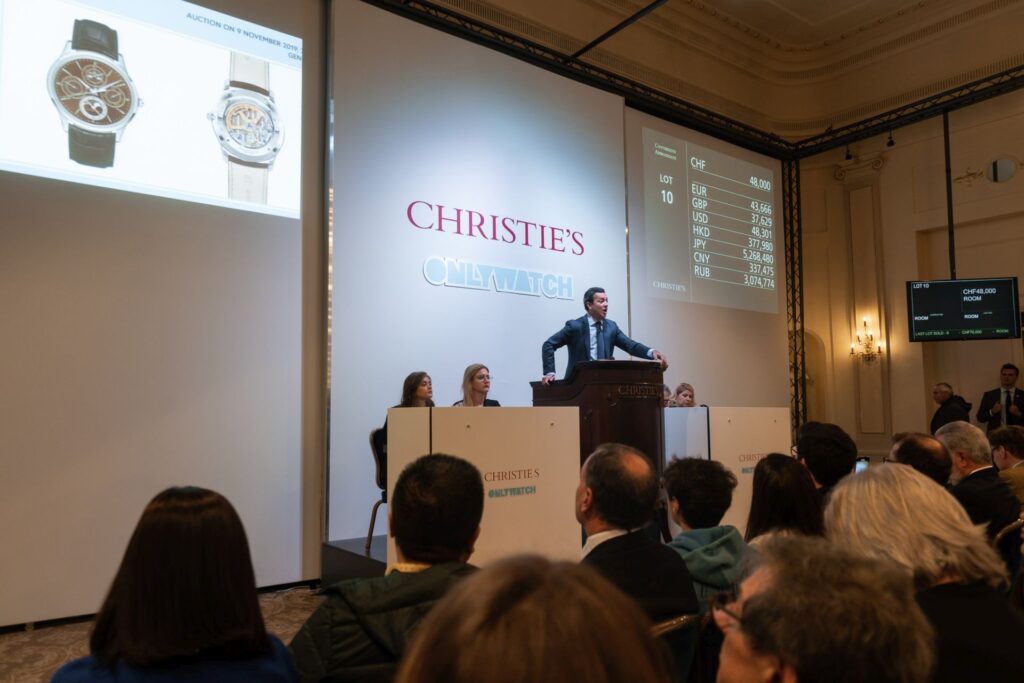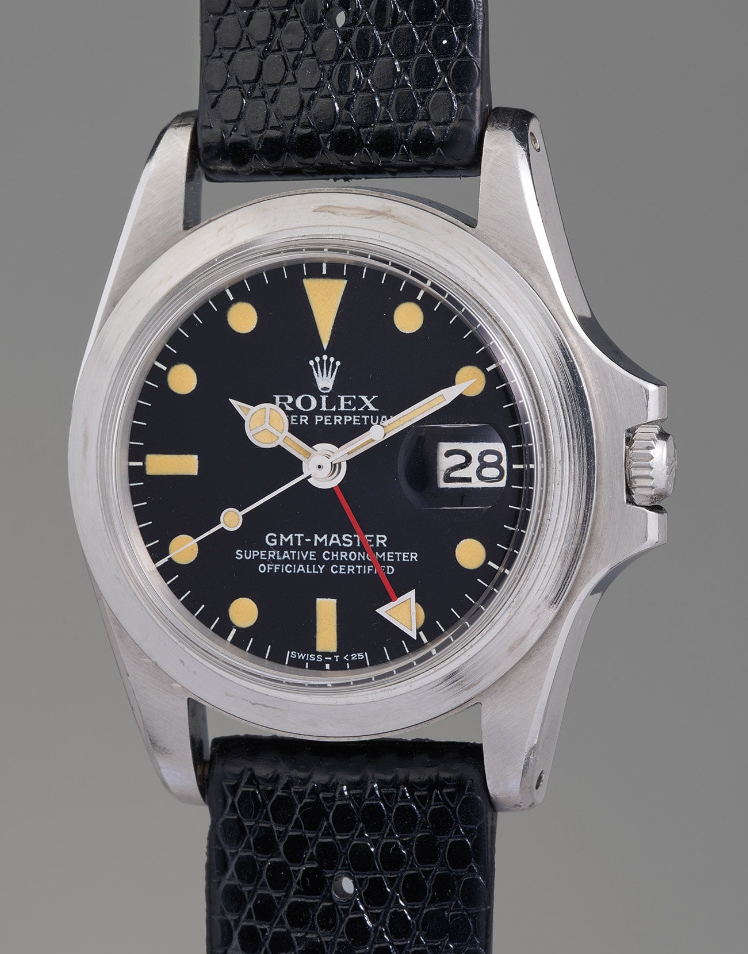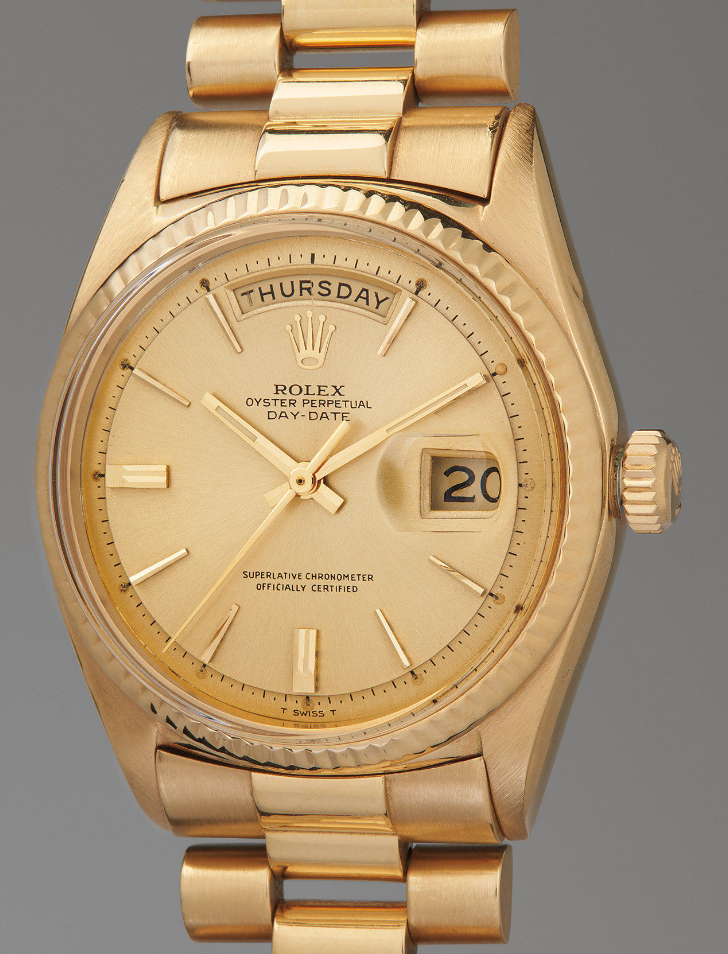Today, we are going to discuss a very popular and contemporary topic in the watch world: we are going to analyse the pros and cons of the major auction houses and their current situation. Ready?
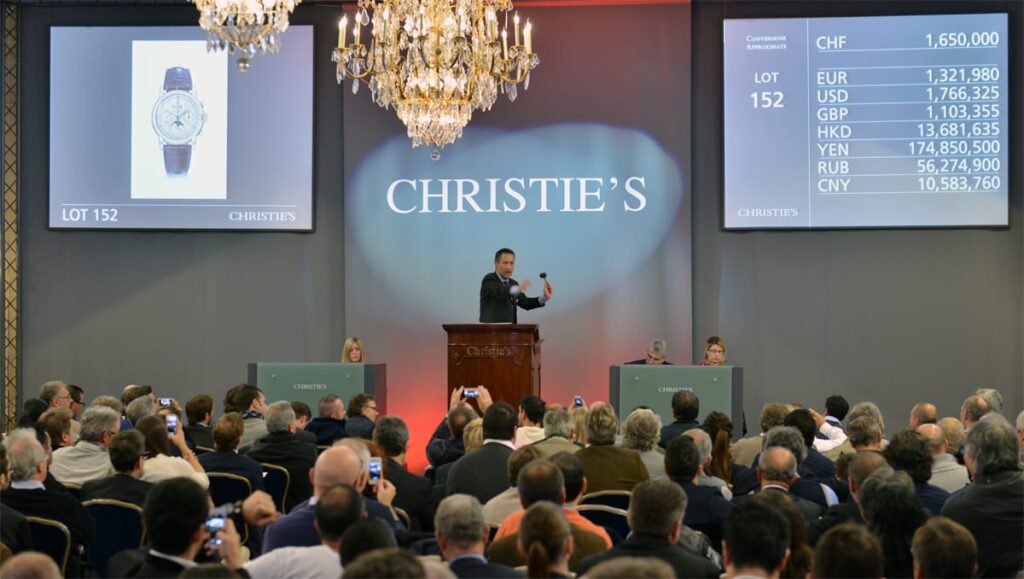
General phenomenon
In the past few years, the role that auction houses have played in the watch world has vastly changed. It’s gone from being a low-key, small get-together for an equally small circle of collectors, to now being a grand spectacle for watch enthusiasts worldwide, influencing, and even guiding the market.
This, to a large extent, is thanks to the age of information and the technology around us. The premier auction houses have used an innovative method to boost their popularity even more: they have recorded every single item (in this case, watches) via high quality photos, videos and text, so that the whole world can see what’s up for grabs – both collectors and spectators alike.
This has 2 primary effects: one, it increases the excitement behind an auction, and two, the potential bidder can examine and inspect every single little detail of the timepiece that they so desire.
Details which, now more than ever, can make the difference between a mediocre piece and a real show-stopper.
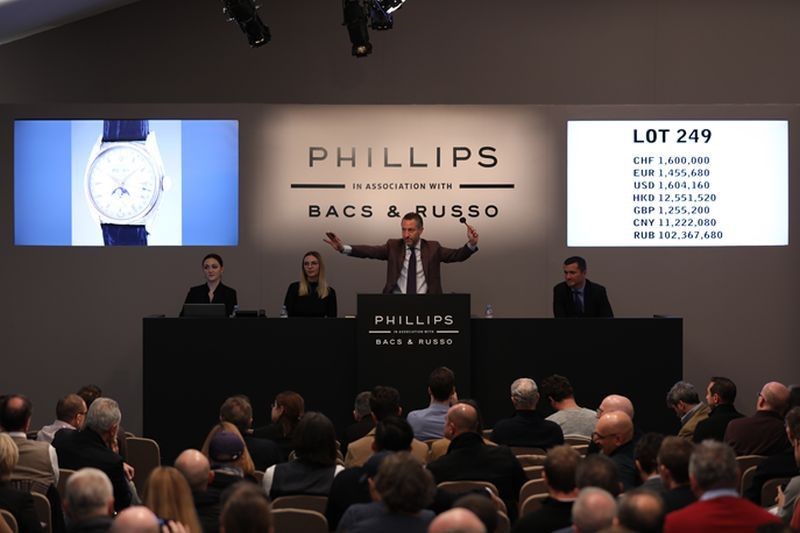
“Condition is everything”
Another way by which auction houses have propelled themselves as trendsetters in the watch world is by focusing on the condition of the pieces that they offer (as well as rarity).
So, it would come as no surprise that over the past decade, the many of the lots offered have been in pristine condition. Naturally, the market followed.
“Quality over quantity”. In this case, the “quantity” would be the “lack thereof”, or, rarity. This applies to auction houses nowadays, with exception for pieces that were produced in extremely low numbers.
Another phrase you might have heard recently, particularly on Instagram, is “condition is everything”. This term was initially coined by Asian collectors, who hold the condition and quality of the timepiece at the top of their list when it comes to their buying criteria. Now, it seems to have become the worldwide consensus.
That being said, it makes sense as to why more and more auction houses work tirelessly to offer lots which are both super rare and in excellent condition – a combination which elevates bids to the stars.
All the above changes in policy have brought economic success to the auction houses.
In fact, in the last few years, more and more records have been set: achievements which some time ago seemed like very infrequent exceptions.
For example, take this statistic: in 2019, a remarkable 17 timepieces sold at auction for over €1 million.
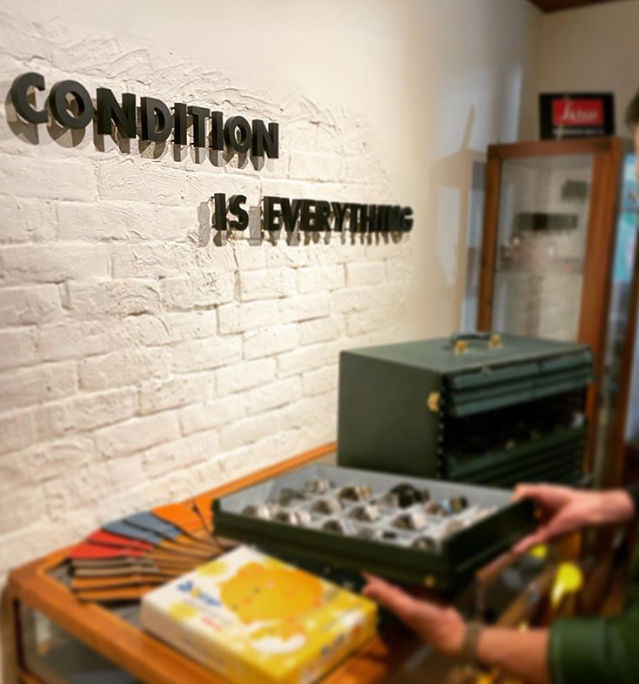
How do you buy a watch at an auction?
In the past, buying a watch at an auction was normally a very rare and limited occasion, but nowadays, we are spoiled for choice.
Regardless of the type of role you would want to play in the auction (seller, bidder or spectator), there are some forms that you have to fill out in order to participate.
Let’s now have a look at all the ways you can take part in watch auctions.
In person
There’s nothing quite like the thrill of being at an auction and seeing an extremely rare piece being sold for astronomical figures first-hand.
Firstly, especially if you are likely to bid/buy, it is vital that you attend the preview, to see (and sometimes hold) the prospective pieces. As high quality as the images online may be, nothing compares to studying and examining a watch up close.
An added bonus of attending an auction in person is that it gives you the opportunity to have a chat with like-minded people, both auctioneers and fellow watch enthusiasts.
By phone
If you should choose to participate via telephone, you would need to fill out an additional form, where you disclose the lots that you would most likely be bidding for. So when the auctioneer reaches them, they will ring you up and you will be allowed to participate live over the phone.
Absentee bidding.
In the unfortunate event of you not being able to attend, nor being able to bid by phone, you can fill out the same form from above (indicating the lots you would bid for) whilst also informing the maximum value of the bid you would be willing to go for in order to bring home your desired watch.
Online
The advent of online bidding has exponentially increased the number of bidders at watch auctions. In this way, spectators can also view the events in real-time from wherever they may be. This option is also ideal for those who like to keep a low profile: the online form of bidding ensures maximum privacy, something that many would prefer to have, especially when it comes to bidding on high profile watches.
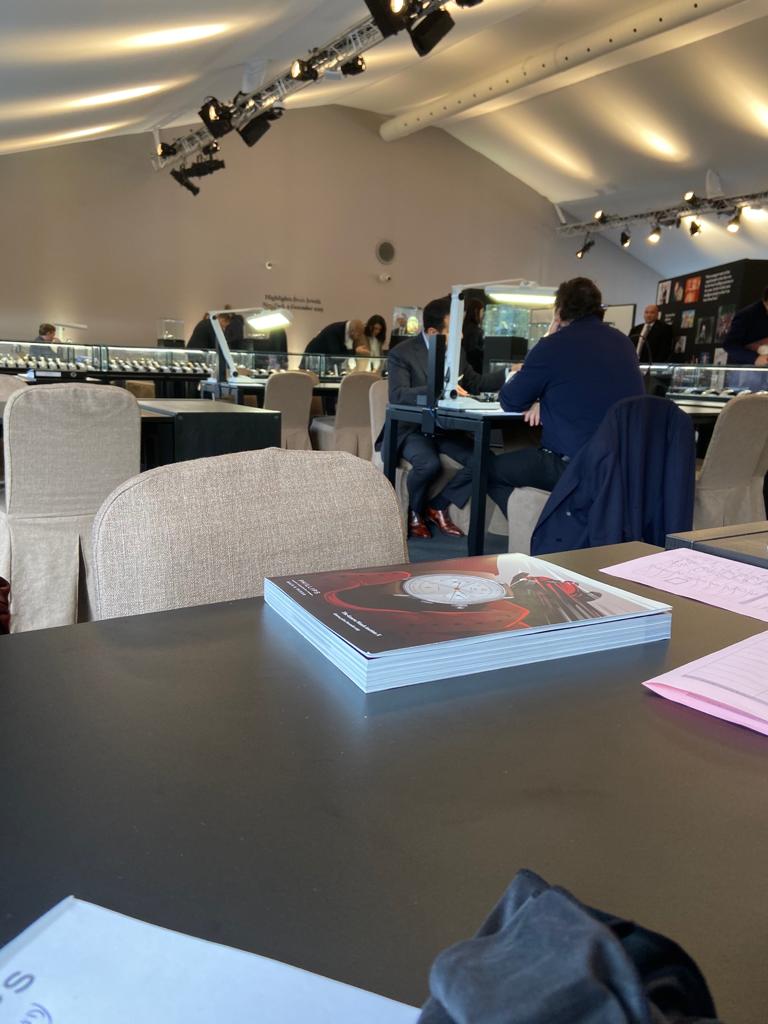
What happens when you “win a lot”?
Once the winning bid has been adjudicated, the winning bidder must pay an additional percentage of the winning bid value as a “commission” fee to the house – the so called “House Rights”.
The 3 main auction houses go by the following formulae:
- 25% on winning bids under €377,000, or 400,000 CHF (except for Christie’s – their threshold is 300,000 CHF)
- 20% on winning bids between the above and €3,773,000, or 4,000,000 CHF
- 13.5% on anything over €3,773,000 / 4,000,000 CHF
Now, let’s have a look at defining the terms that you would hear/read when at an auction:
- Hammer Price: this is the monetary value of the highest/winning bid, which goes to the person who supplied the watch (consignor).
- Commission: this is the additional percentage of the Hammer Price that the winner must pay the auction house for their services.
- Sale Price: this is the sum of the Hammer Price and its Commission fee.
- Reserve Price: this is the minimum price that the seller will accept, decided by both the seller and the auction house before the auction begins. Normally, this value is kept hidden from the bidders. If this minimum price isn’t met, the seller may withdraw the item from being sold.
- Estimate and Appraisal: this is a range of values that an expert in the field and the auction house predict that the watch would go for.
Is it always best to buy from auctions?
The auction house is a very credible, professional and formal theatre in which you can buy a significant timepiece, but it would be foolish to assume that they don’t feel the pressure from digital marketplaces such as Instagram.
This struggle is due to online marketplaces like Instagram operating 24/7, allowing you to buy watches (even high-end luxury ones) within a few taps on a touchscreen at any time you like. You also don’t have to wait for the next “instalment”: auctions like the “Only Watch” event only happens once every two years.
Moreover, whereas the payment process post-auction can take up to several months, online marketplaces can process transactions in a matter of minutes.
That being said however, it is important to underline the fact that online marketplaces can prove themselves fairly risky, with the sale of fake items and/or scams, even on reputable sites. Auctions, on the other hand, provide a total guarantee of the authenticity of their lots by employing experts to evaluate the items, as well as providing as much paperwork as possible.
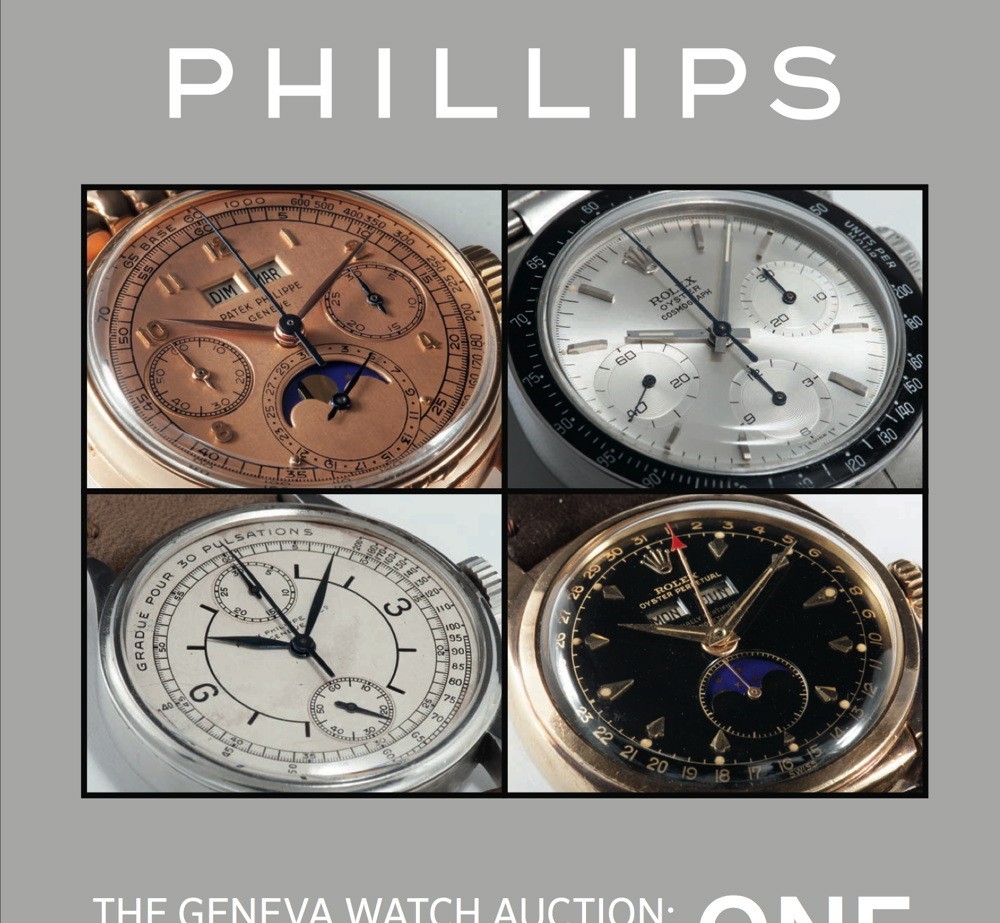
The Philips phenomenon
Out of the major auction houses, one in particular has proven time and time again as the reference point for horologists: we are talking about none other than Phillips in Association with Bacs & Russo, who, towards the middle of the 2010s, inaugurated a seemingly infallible format.
With Aurel Bacs’ incredible level of professionalism and experience as an auctioneer, paired with the Phillips’ vision, they have established themselves as the premier auction house for fine timepieces of great rarity and pristine condition.
Phillips’ success is still ongoing: in 2019 their total revenue from all their lots amounted to nearly €100 million (€99,600,000 to be precise).
If that isn’t enough, let’s put things into better perspective: 12 out of the 17 watches mentioned before (the ones that went for over €1 million) were auctioned at – you guessed it – a Phillips event.
One of the primary factors for Phillips’ success is their attention to detail, best highlighted in their comprehensive, seamless and user-friendly online bidding service, which massively expands their following.
On that topic, it is worth noting that their online membership numbers grow steadily year upon year, with increased activity and participation, too.
As well as Phillips….
Phillips got its own section, so it would only be right if we mentioned another hugely important auction house: Christie’s.
Founded in 1766, Christie’s is one of the most renowned auction houses in the world, with their strongest department most definitely being Fine Art: they are responsible for the sale of some of the world’s most important works of art.
They too represent a key figure when it comes to watch auctions, and have been for a long time. Last year was a memorable year for Christie’s, as they auctioned some extraordinary timepieces: have a look at the photos below.

Italian Auction Houses
Back home, we have some very reputable auction houses, too, but none stand out quite like Cambi Aste. Last year, Cambi, already well known for their activities in the world of Fine Art and Antiques, decided to make their debut in the horological world.
They did so through a partnership with the Verga family: an Italian icon when it comes to watch dealerships, boasting 4 boutiques (one of which is exclusively for second-hand pieces). As well as the sale of watches, the Verga family members are also well known for their own collection of vintage watches. This was the foundation upon which the Cambi-Verga partnership was built, the product of which was a historic auction that took place on the 5th of December 2019. The auction raked in €639.800, a staggering figure in the context of Italian watch collecting.
For more content on this auction, look no further than our article on Cambi Aste.
Out of the many fascinating lots, we couldn’t help but include our 2 most notable picks:
Lot 171: Patek Philippe 3970EP – Hammer Price: €115,000
This extraordinarily beautiful piece featuring diamond indices, arrived on auction unworn and with full box and papers: a New-Old-Stock dream.
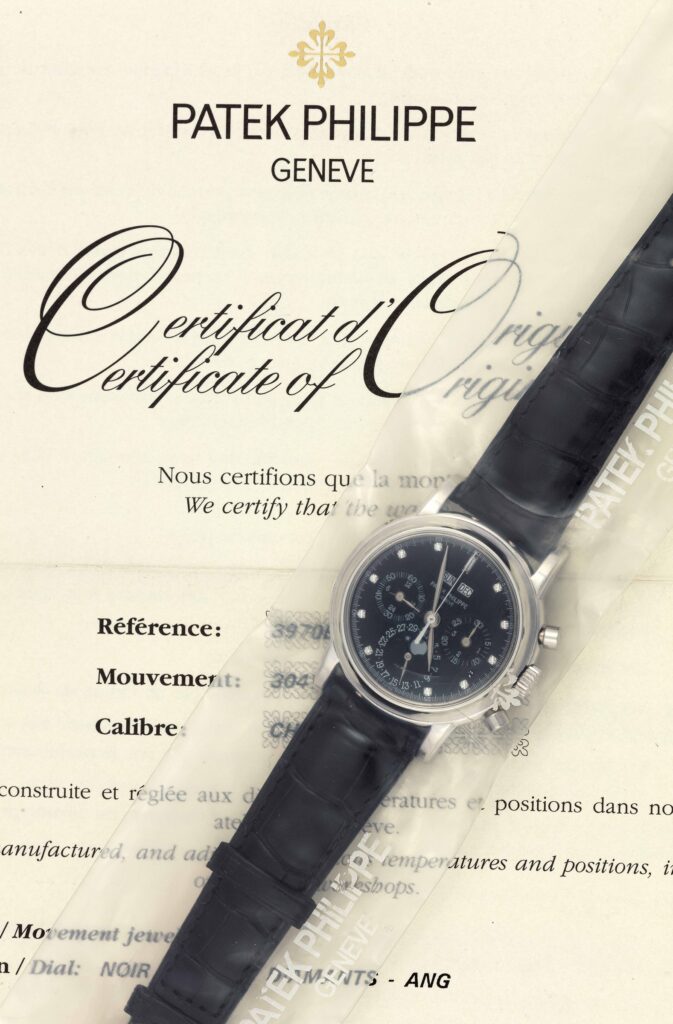
Lot 169: Patek Philippe 3712 – Hammer Price: €100,000
Produced over a period of only 8 months, the 3712 is an incredibly rare and sought-after reference. Like the previous piece, it too came with original kit: full box and papers. The complete package.
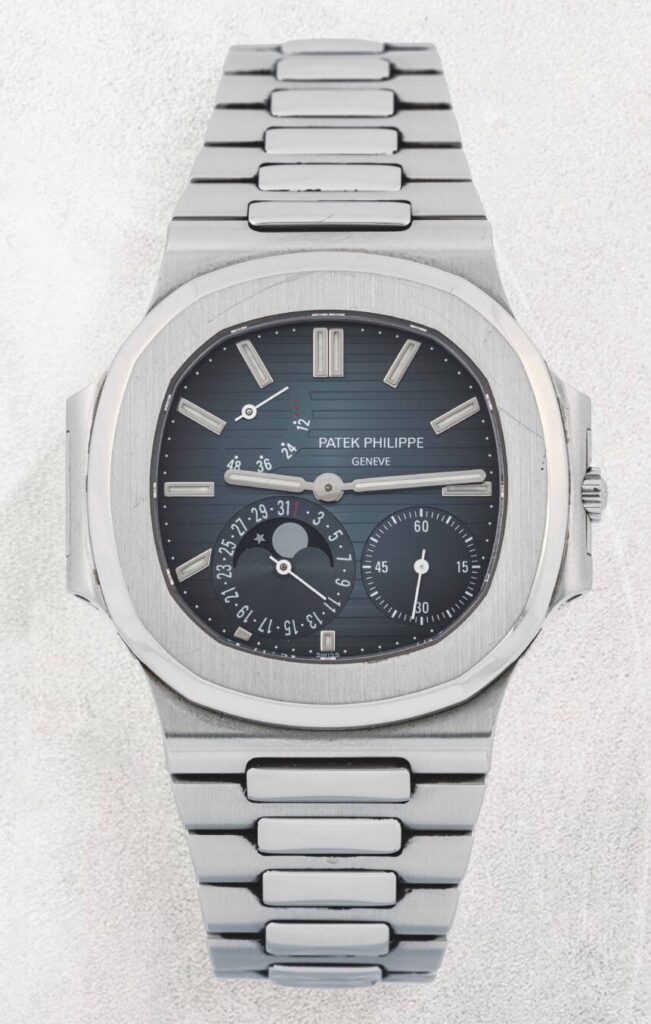
Top 5 from the past 5
Now we move on to the real show-stoppers. Let’s have a look at the record setting watches auctioned in the past 5 years.
Patek Philippe Grandmaster Chime 6300A.
The Patek Philippe 6300A was sold by the Christie’s auction house in November 2019, and to date is the most expensive watch ever sold at an auction, selling for 31 million Swiss Francs (€28,470,000).
It was made for the aforementioned “Only Watch” fundraiser, and made headlines all over the world, not just in the watch one, either.
The ref. 6300A contains a mind’boggling 20 complications and is the crown jewel of the Swiss watch house; it is so exclusive that Patek Philippe themselves picked and chose who they would make them for.
The one characteristic that makes the 6300A truly unique was that its case was made from stainless steel, never used before on this line.
The auction didn’t take place online, which is often the case for watches of this magnitude, but rather in a grand auction hall, filled with euphoria and enthusiasm.
By clicking here, you can find our guide to our favourite lots from Only Watch 2019.
Rolex Daytona Ref. 6239 – Paul Newman’s “Paul Newman”
Other than being celebrated as one of the greatest actors of all time, he is also undoubtedly a style icon.
He was often seen wearing one watch in particular – one that would then go on to be ceremoniously named after him. Technically, the “Paul Newman” is not the name of the reference, but rather the dial configuration – a rather “exotic” one at that.
(For a complete guide to the Daytona, have a look at our article here)
In October 2017, Phillips carried out one of the most iconic auctions in modern history, when it was revealed that Paul Newman’s personal “Paul Newman”, the watch to which Rolex owes much of the Daytona’s success, was for sale.
The legendary watch was sold for 17.000.000 CHF (€16.7 million), and it too made headlines around the world. One thing worth noting is that all the proceeds from this went to the Newman Foundation, a charity headed by Paul Newman’s daughter, Nell, and her husband, James Cox.
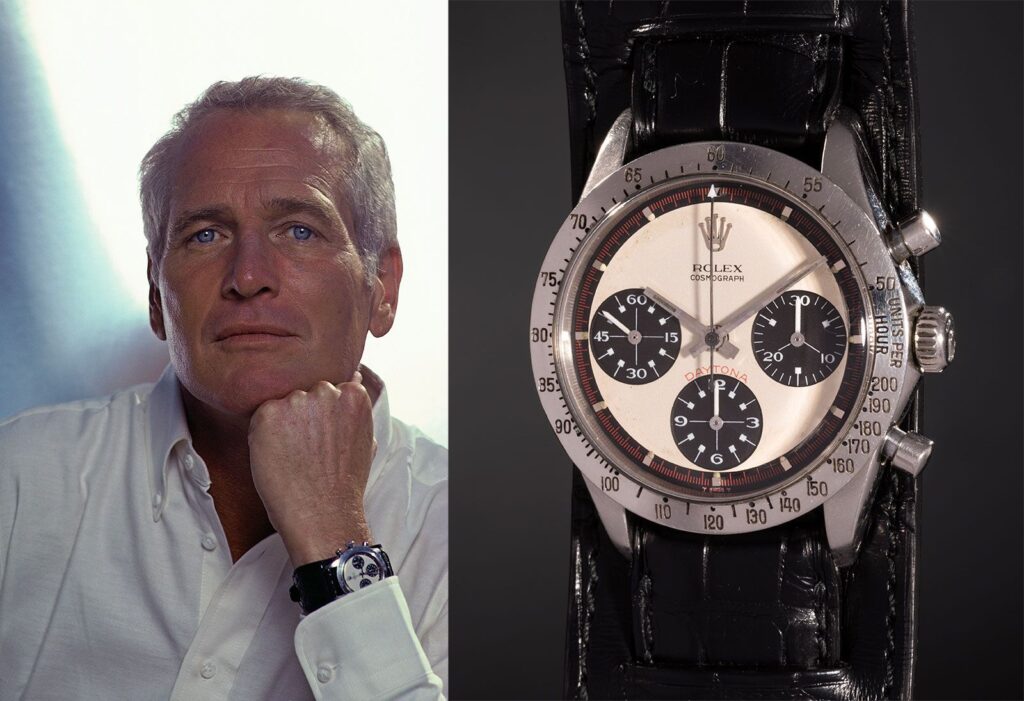
Patek Philippe 1518 in Stainless Steel
The 1518 was introduced in 1941 as Patek Philippe’s first Perpetual Calendar Chronograph. To learn everything about it, we wrote an article that you can find here.
Out of the 281 1518s ever produced, only 4 were made with a steel case.
When it was announced that it was up for auction in November 2016, the whole watch world was watching. And what a sight it was.
When the 1518 was sold at a hammer price of 11 million CHF, it (back then) held the record for the most expensive watch ever auctioned.
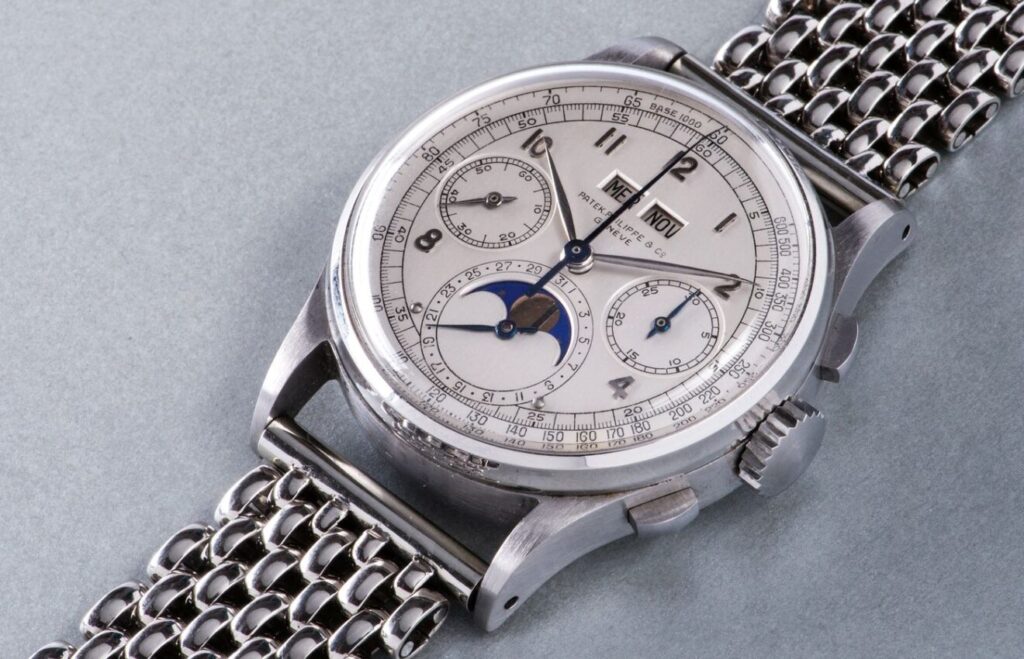
Marlon Brando’s Rolex GMT Master ref. 1675
In December of 2019, Phillips unearthed the Hollywood heartthrob’s watch that he wore in the iconic film “Apocalypse Now”.
One peculiarity that immediately captures one’s attention is the absence of the beloved Pepsi bezel – removed by Brando himself. Another value prop is the engraving of the actor’s name on the caseback. For more information on this iconic watch, have a read of our article on it.
The auction hall was filled with excitement as a ferocious bidding battle took place for the ownership of this piece. Ultimately, the watch was sold for a precious 1.952.000 USD (€1,752,000) – an absolute record for a Rolex GMT Master.
Jack Nicklaus’ Rolex Day-Date ref. 1803
Jack Nicklaus, also known as the “Golden Bear”, was one of the greatest Golfers of all time. He received this Rolex Day-Date way back in 1967 – the same year he won his second U.S. Open (and setting a record score for it, too).
The Rolex Day-Date that was put up for auction sat comfortably on Nicklaus’ wrist for well over 50 years: it accompanied him on countless tournaments all around the globe and stuck with him even after he retired from the sport.
In light of this, we can understand how difficult it must have been for him to part ways with this piece: after all, it accompanied him through most of his life. However, it was auctioned off for a great cause – the Nicklaus Foundation, which aids underprivileged children worldwide.
Alfredo Paramico, well known vintage watch collector, was the lucky and generous man who placed the winning bid for this historic timepiece for a cool 1,220,000 USD (€1,095,000, a record for a Day-Date) in aid of the Nicklaus Foundation… good on him!
– Translated by Patrick R.

